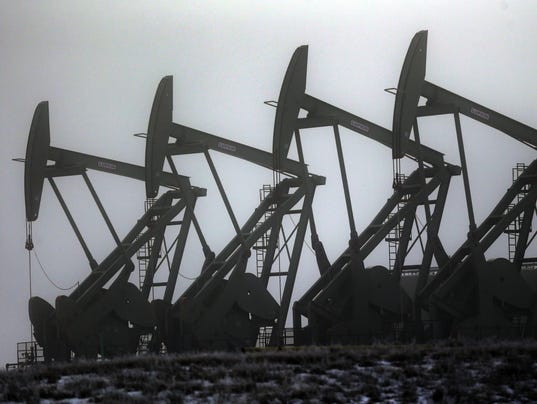But now that U.S. production has finally dipped, it may augur a new phase for oil markets in which production cutbacks could lead to higher prices. The Energy Information Administration reported on April 1 that total U.S. oil production fell for the week ending on March 27, falling 36,000 barrels per day to 9.38 million barrels per day.
The prior week's production level of 9.42 million barrels per day was the highest level in three decades. If output continues to decline, mid-March 2015 could mark the peak of U.S. oil output, at least for the foreseeable future.
That would raise the possibility that oil prices have bottomed out. Where do they go from here? Is it possible that oil prices could dip any lower? If they are indeed about to rise, will they rise quickly or stay flat for a while before gradually ascending?
There are several major determinants of oil prices one should consider.
1. U.S. Production. The first and most important thing to watch is the aforementioned levels of U.S. production. Weekly figures come out from the EIA and we should get a better sense of where U.S. oil flows are going this week. Consistent weekly drops will put upward pressure on prices.
2. Iran Negotiations. In the very short-term, a lot depends on the outcomes of the Iranian negotiations. A breakthrough in negotiations on April 2nd sent oil prices down immediately but this has been temporary. Oil prices will again correct themselves once the markets realize that Iranian oil won't begin flowing overnight, as there are still several months before a final accord is signed and even more time before the U.N. Nuclear Agency confirms compliance. Still, over the long-term, new Iranian oil will keep prices from rising too much. On the flip side, a breakdown in the ongoing talks between now and June will raise geopolitical tension and ensure Iranian crude stays on the sidelines, resulting in higher oil prices.
3. Credit Crunch. Another significant development is the reevaluation of credit lines for distressed oil drillers. Banks typically readjust their credit facilities for oil and gas companies in April and October. With the onset of April, smaller oil producers will find that their assets are no longer worth what they once were in the eyes of their creditors. That will lead to a large cutback in credit as oil firms become unqualified for generous lending. As a result, junk oil firms could face a liquidity crisis as they run out of cash, pushing some into bankruptcy.
4. Oil storage. Fears have arisen that oil storage is running out. Indeed, oil diverted into storage has skyrocketed, and key hubs have seen their storage tanks filling up rather quickly. More than 77 percent of storage capacity is used up in
5. Oil Demand. Demand is starting to look stronger as well. U.S. drivers drove a record amount of miles for the month of January, capitalizing on lower gasoline prices. Major U.S. oil refineries are also taking advantage of the glut. Normally a time for spring maintenance, refineries processed 15.7 million barrels per day for the week ending on March 27, a record level for this time of year. As we move through spring and summer approaches, refineries will ramp up processing even further, providing a lift to demand.
6. The Fed. Another influential development on oil prices will be the next moves by the
7. China. As with most things in the energy world, a lot hinges on China. China has been taking advantage of collapsed prices by stepping up its purchases of oil to fill its strategic petroleum reserve (SPR). That provided a bit of a demand boost in recent months, putting a floor beneath prices. But now China's SPR is nearly full, so its imports could plateau for a while. Lower oil demand – or at least demand not growing as fast as expected – will keep oil prices from rising too much.
OilPrice.com is a USA TODAY content partner offering oil and energy news and commentary. Its content is produced independently of USA TODAY.


